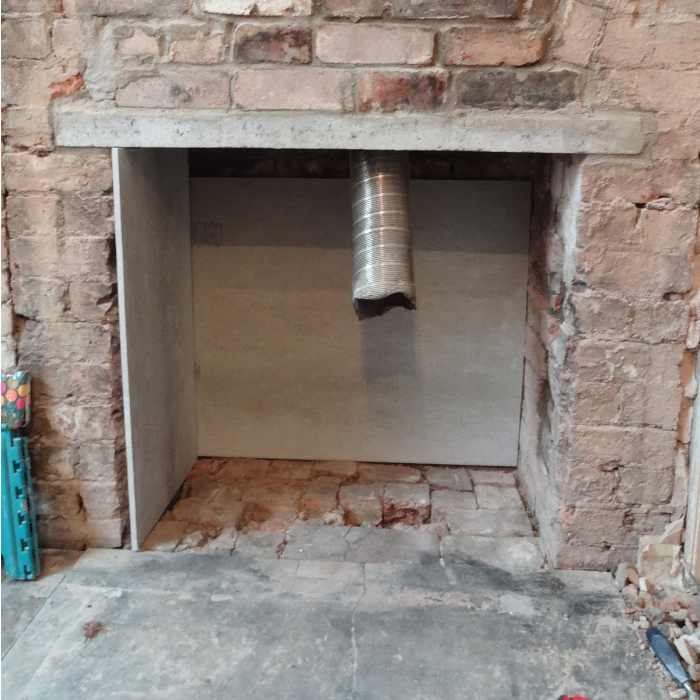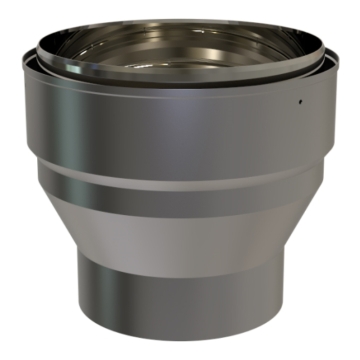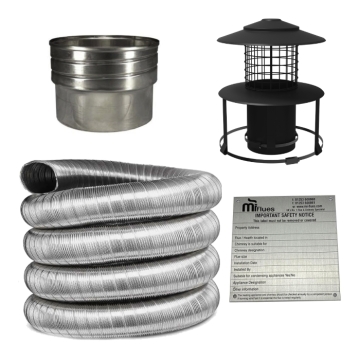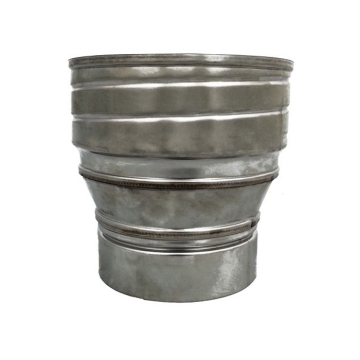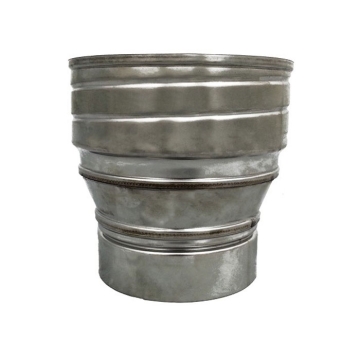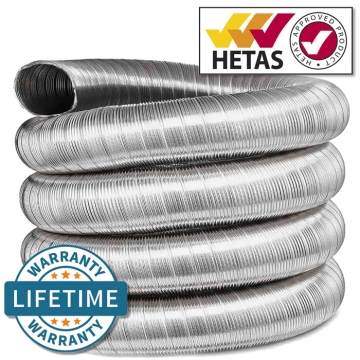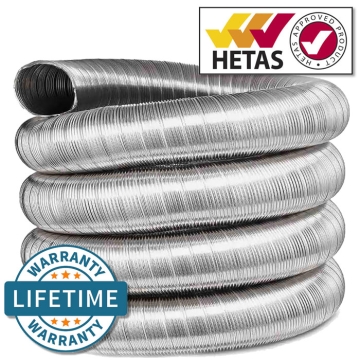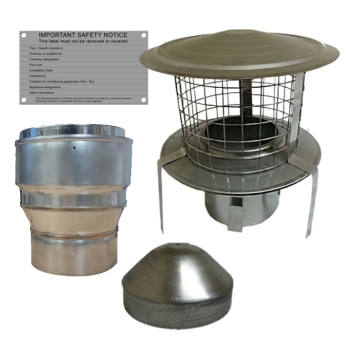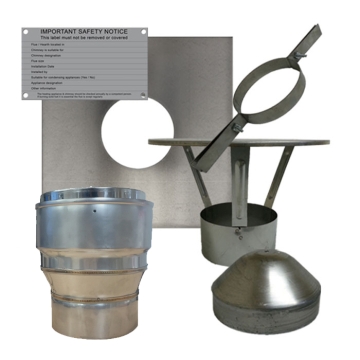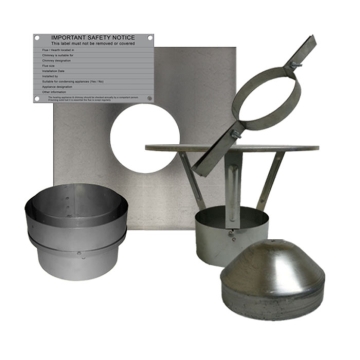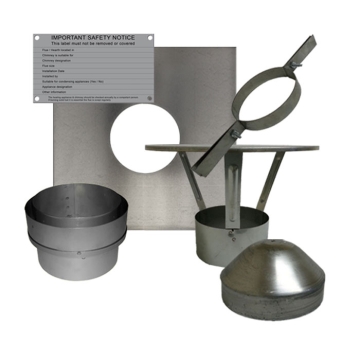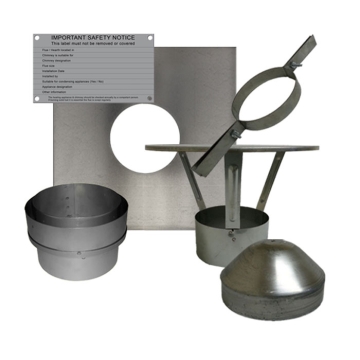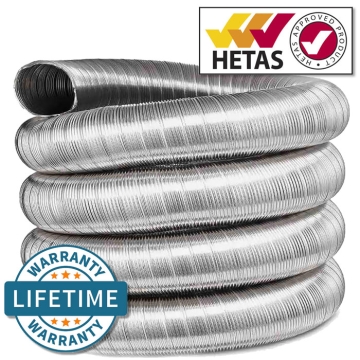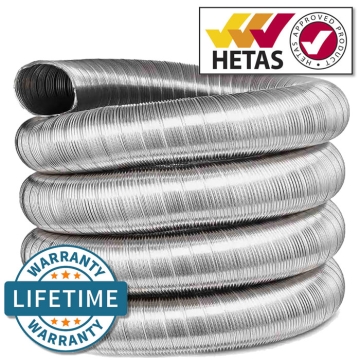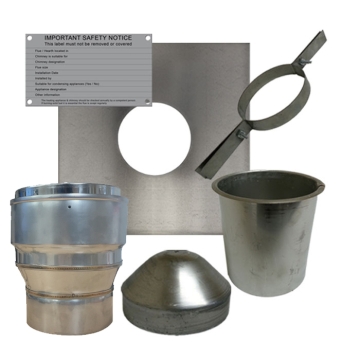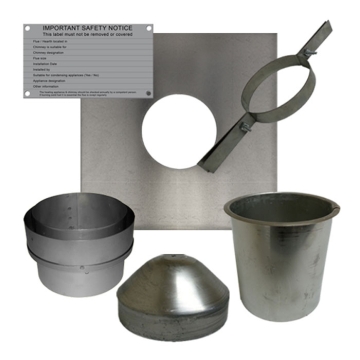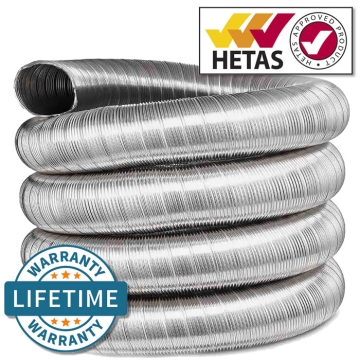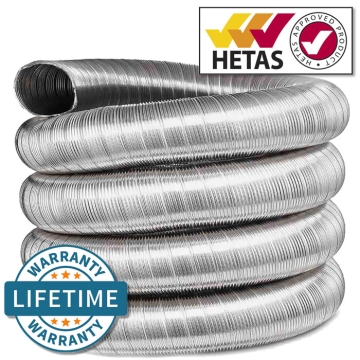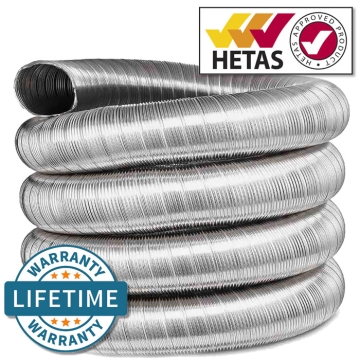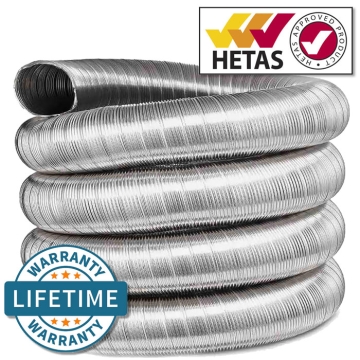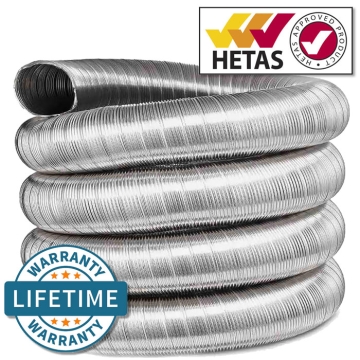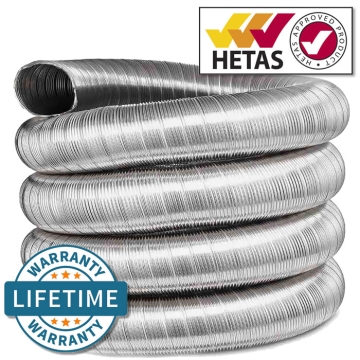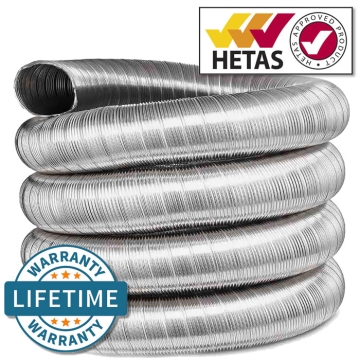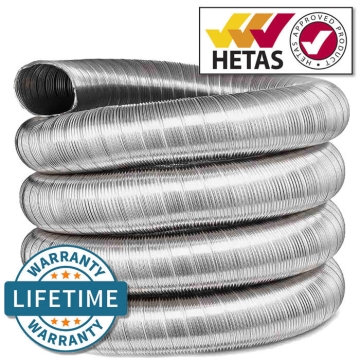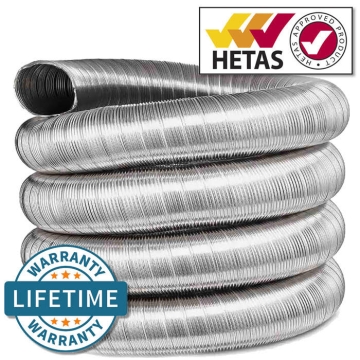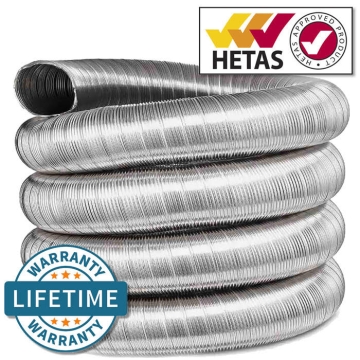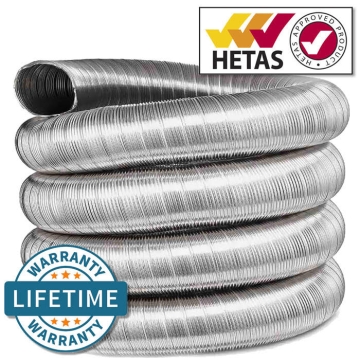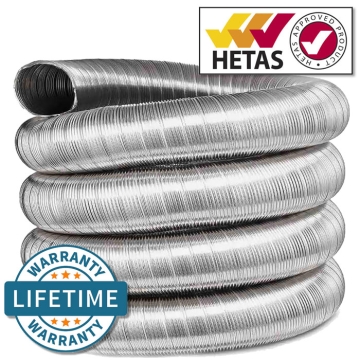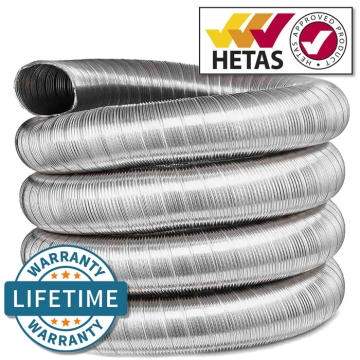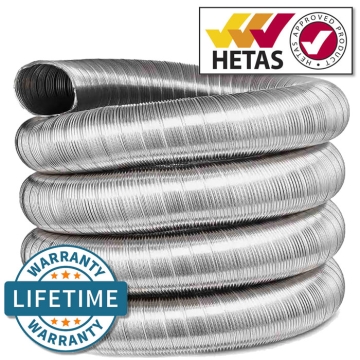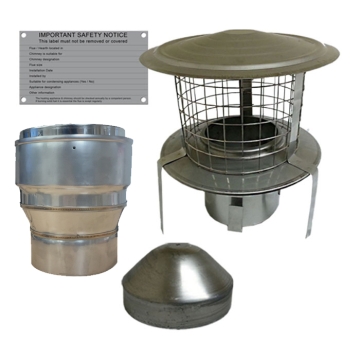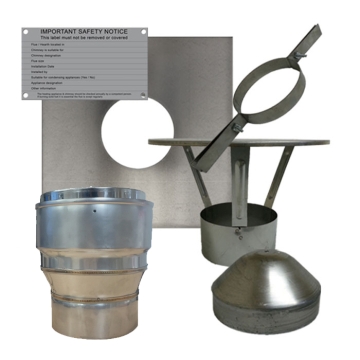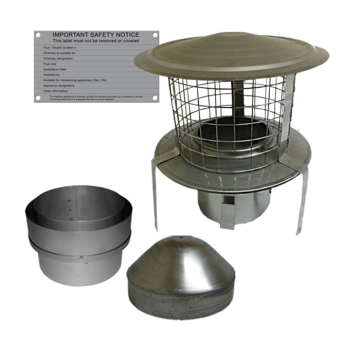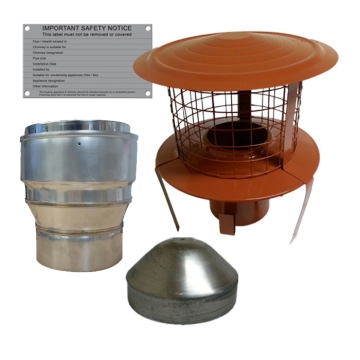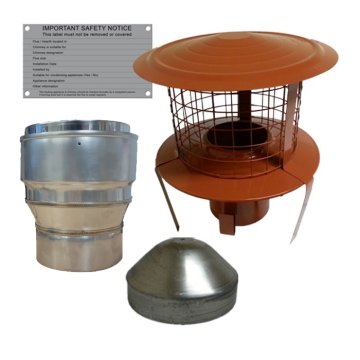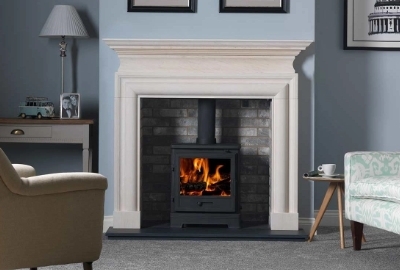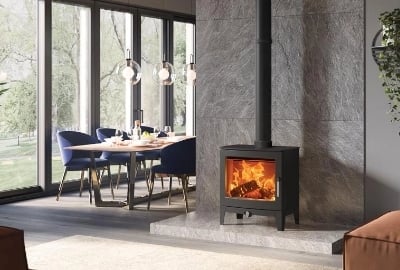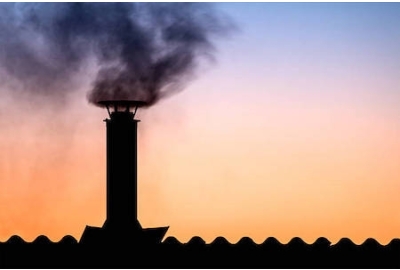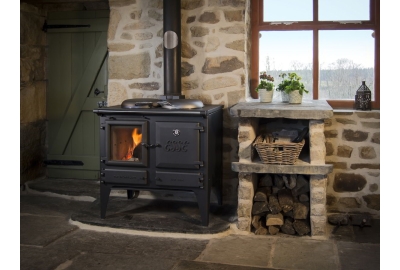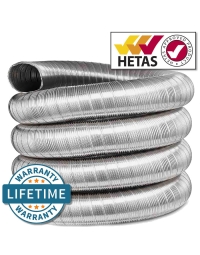If you’re looking into the possibility of buying and installing a log burner or gas stove in your home then it is worth making sure you have all the right parts for the job. Once you’re set on the style and heat output of your chosen stove the next integral piece of your installation is the flue liner. A flue liner can be fundamental to modern installations, they ensure your heating appliance works efficiently and safely. In this edit, we’ll explain the purpose of a flue liner and the various benefits of installing one within your chimney.
Contents
What is a chimney flue liner
Which size flue liner do I need?
The benefits of a flue liner for your stove
Should I install a flue liner with my log burner?
Chimney sweeping & maintenance advice
What is a chimney flue liner?
Simply put, a flexible flue liner is a stainless steel tube that hangs down from your chimney pot or stack and connects into the stove pipe that slots into the flue collar of your log burner or gas stove. A flue liner, which is often referred to as a chimney liner or steel flue, sits on the inside of your brick built chimney and carries the exhaust gases away from your stove and up your flue liner instead of releasing them directly into your chimney cavity.
There are two different grades of solid fuel flue liner available: 316-grade flue liner and 904-grade flue liner. We recommend 316-grade chimney liners for dedicated wood burning stoves that will burning seasoned or kiln dried firewood. This type of flue liner is cheaper than the more expensive but also more durable 904-grade flexible flue liner. You should upgrade to 904 flue liner if you plan on burning smokeless coal frequently. Both these good quality flue liners that we supply are Hetas approved and should last up to 25 years if maintained correctly and you use the right type of fuel.
Which size flue liner do I need?
It is crucial that you use the recommended flue liner size for your specific stove or fire and never reduce the diameter of the flue. When buying a log burner or gas stove you’ll need to find out the diameter of the flue collar of the stove and this is often a good guide to gauge the correct size of liner you’ll required for the stove. The size of the stove collar however does not always correspond to the size of the flue liner you’ll need so ensure you check the manufacturer's instructions before you purchase a flue liner.
The general rule for getting a suitably sized flue liner is that for up to 20kW stoves a minimum of 6” diameter flue liner is required. You can use a 5” diameter flue liner if you have a DEFRA-approved stove and the manufacturer has confirmed this is compatible with this size flue. If the flue collar of the stove measures 5” in diameter but you need a 6” flue liner there are adapters available that allow for the increase in diameter. When measuring the length of your flue liner our main piece of advice is a simple one, you must ensure it is long enough to reach from the top of your chimney to the bottom of the fireplace opening. Connecting two pieces of flue liner together is against regulations so double checking the length you need is essential. We recommend ordering an extra metre or two of flue liner to cater for any bends or offsets that you may have within your chimney space.
The benefits of a flue liner for your stove
In this part of our guide we’ll explain the purpose and benefits of a flue liner and why we think it is a no-brainer to have one fitted with your new stove. There are lots of reasons to buy a flue liner but we’ve listed the main advantages of installing one here:
- Safer chimney - Older chimneys often require a flexible flue liner solution as over time they can lose their structural integrity and/or become warn. Cracks can form in your chimney cavity and can leak fumes into other parts of the home so a flexible flue can prevent this potential hazard. Having your chimney smoke tested will often help to identify some of these problems.
- Increase the efficiency - An older chimney that does not have a flue liner can be a cold and damp space, it can be difficult for the hot gases to rise and the result is a poor up-draught. Large chimneys measuring over 200mm in diameter may affect the performance of an appliance. A flue liner helps insulate the flue gases and keep them warm as they travel upwards, this promotes good draught and can improve the efficiency of your stove.
- Easy to maintain - Your wood-burning stove creates smoke which is a product of the combustion, this in turn creates a build-up of soot within the chimney. Excessive amounts of smoke will dirty the inside of your chimney and can form creosote which can lead to blockages. A flue liner is easy to sweep and there are specific chimney sweep brushes made to easily clean and maintain your flue liner.
Should I install a flue liner with my log burner?
Although there is not a legal requirement to fit a flue liner with a wood burner, most retailers and stove installers recommend that you do. Without a flue liner, it is difficult to determine the quality and performance of the chimney just by looking at it. Issues like poor flue draught, lighting difficulties and shorter burn times are less likely to occur if you opt to fit a flexible liner with your stove. Before installing a wood burner, your chimney should be checked by a professional. A newly built chimney may still require a flexible flue liner in order for it to be suitable for a wood-burning stove. For example, if a gas flue liner was originally installed it may not be suitable for a solid-fuel stove (gas flues are usually single skinned and won’t take the heat that a wood burner produces). Finally, a chimney liner should not be used in place of a suitable chimney, if your chimney has internal or external damage, you must repair it even if you have a chimney liner in place. To summarise, we have found that a flue liner will help to protect your chimney and save you money from potential repairs in the future but if you decide not to fit a flue liner ensure you meet the requirements of Document J Building Regulations.
Chimney sweeping & maintenance advice
Sweeping your flue liner is an essential part of maintaining your stove and fireplace, the best times to have your chimney swept are just before the start of the heating season and just after the Spring time when you’re looking to stop using your fire. Both HETAS and The National Association of Chimney Sweeps (NACS) encourage that you have your chimney swept at least twice a year when burning wood or bituminous house coal and at least once a year when burning smokeless fuels. Regular sweeping of a flue helps to prevent blockages or debris that can put you at risk of a chimney fire, a professional chimney sweeper will also be able to look out for any other hazards you may be unaware of. It doesn’t matter the type of chimney you have, whether it be a brick, clay, twin wall flue system or flue liner they all need regular sweeping.
For sweeping your chimney you should look to contact a reputable chimney sweep to be sure you’re getting the best advice and service. The NACS and HETAS are reliable sources of chimney sweeps and can assist you with finding someone to do the job. The best chimney sweeps are very mindful of making as little of a mess as possible they are trained in the prevention of dust & soot escaping while they carry out the sweep. A little mess however comes with the territory especially if the chimney is blocked or it has not been regularly swept, under these circumstances, it is difficult to guarantee a mess-free job. If you’re wondering how much this will cost then the average chimney sweeping fee is approximately £80 but this can vary, you also need to consider that sweeps may charge more if your chimney has abnormal blockages or hasn't been maintained properly.



